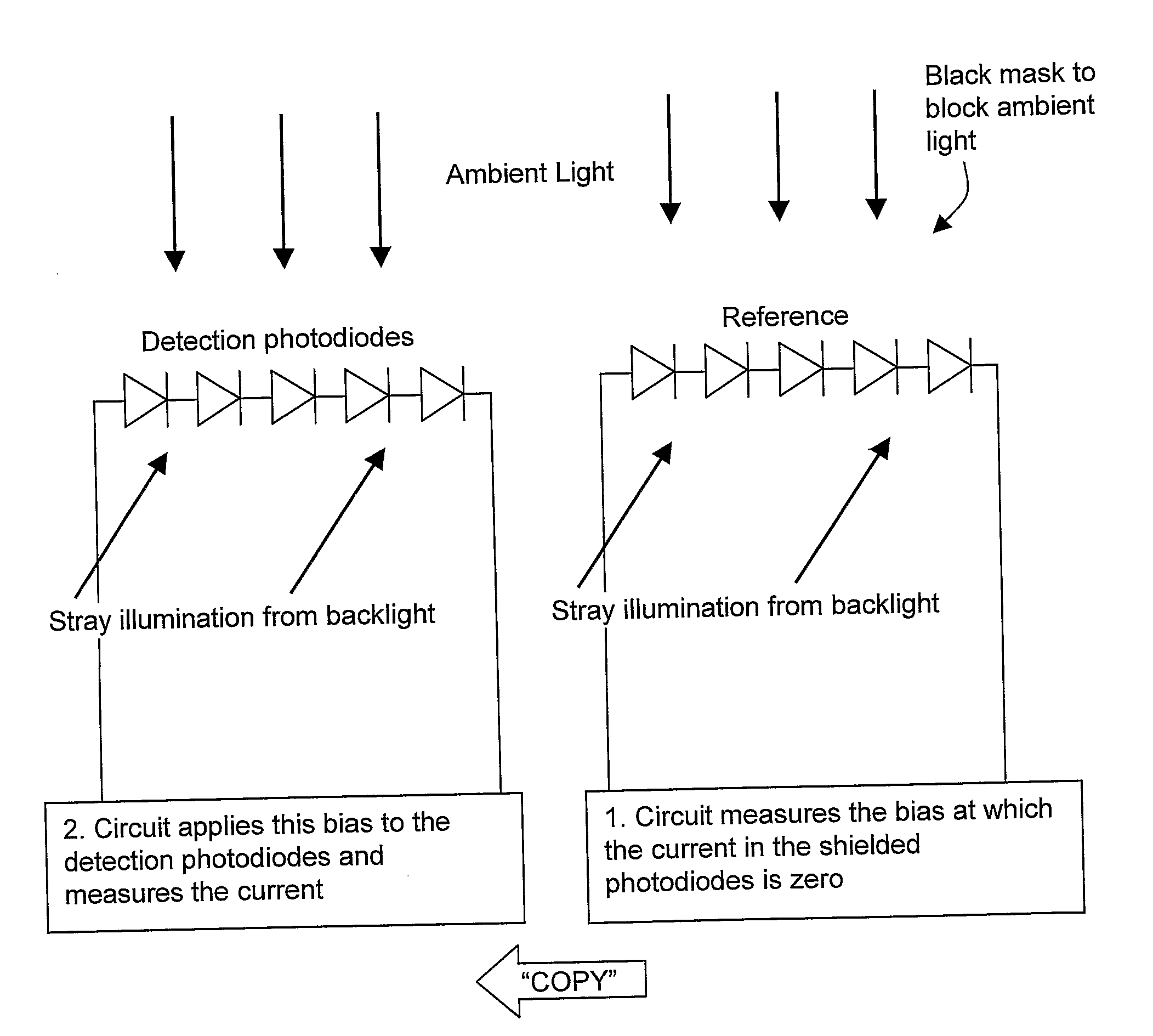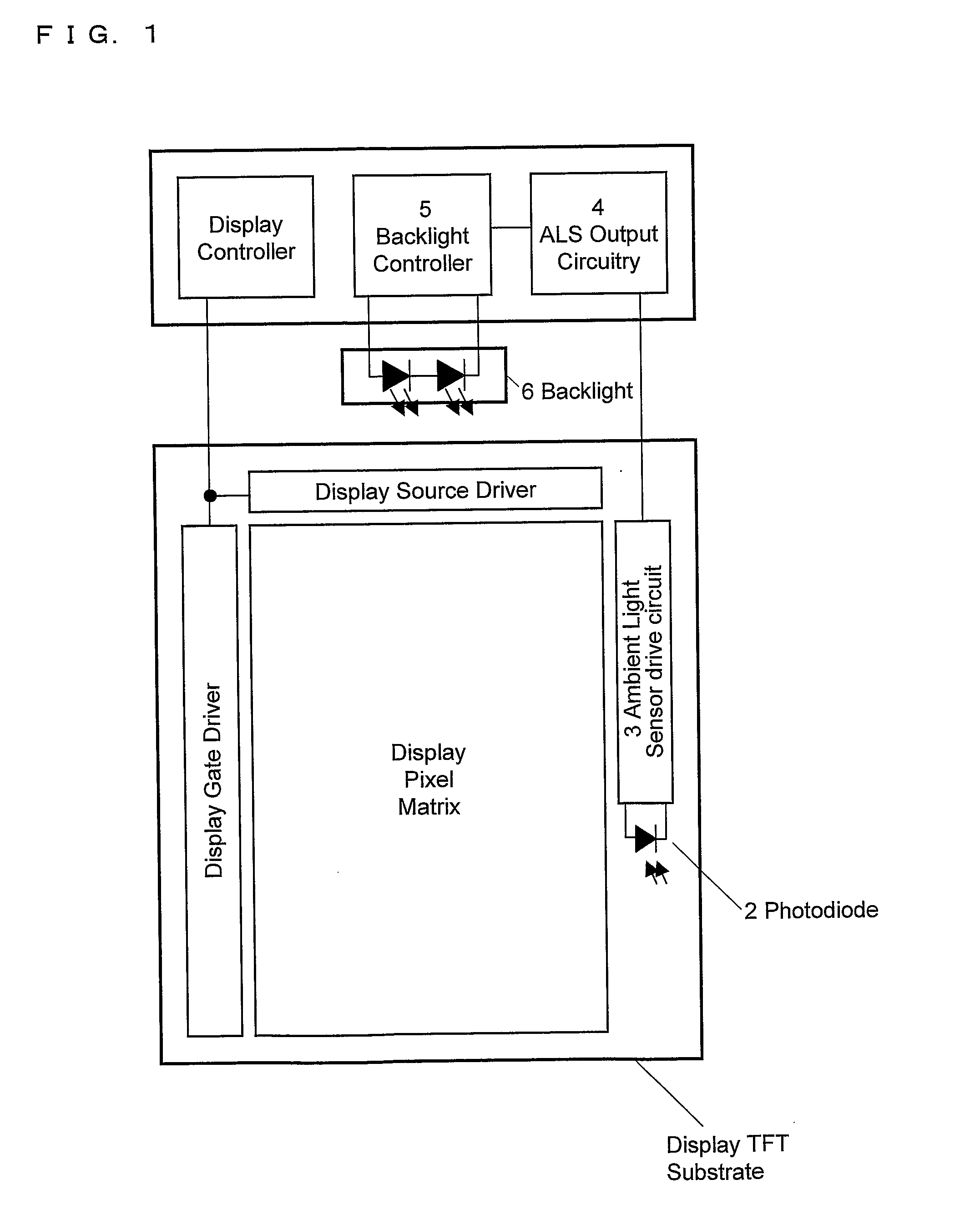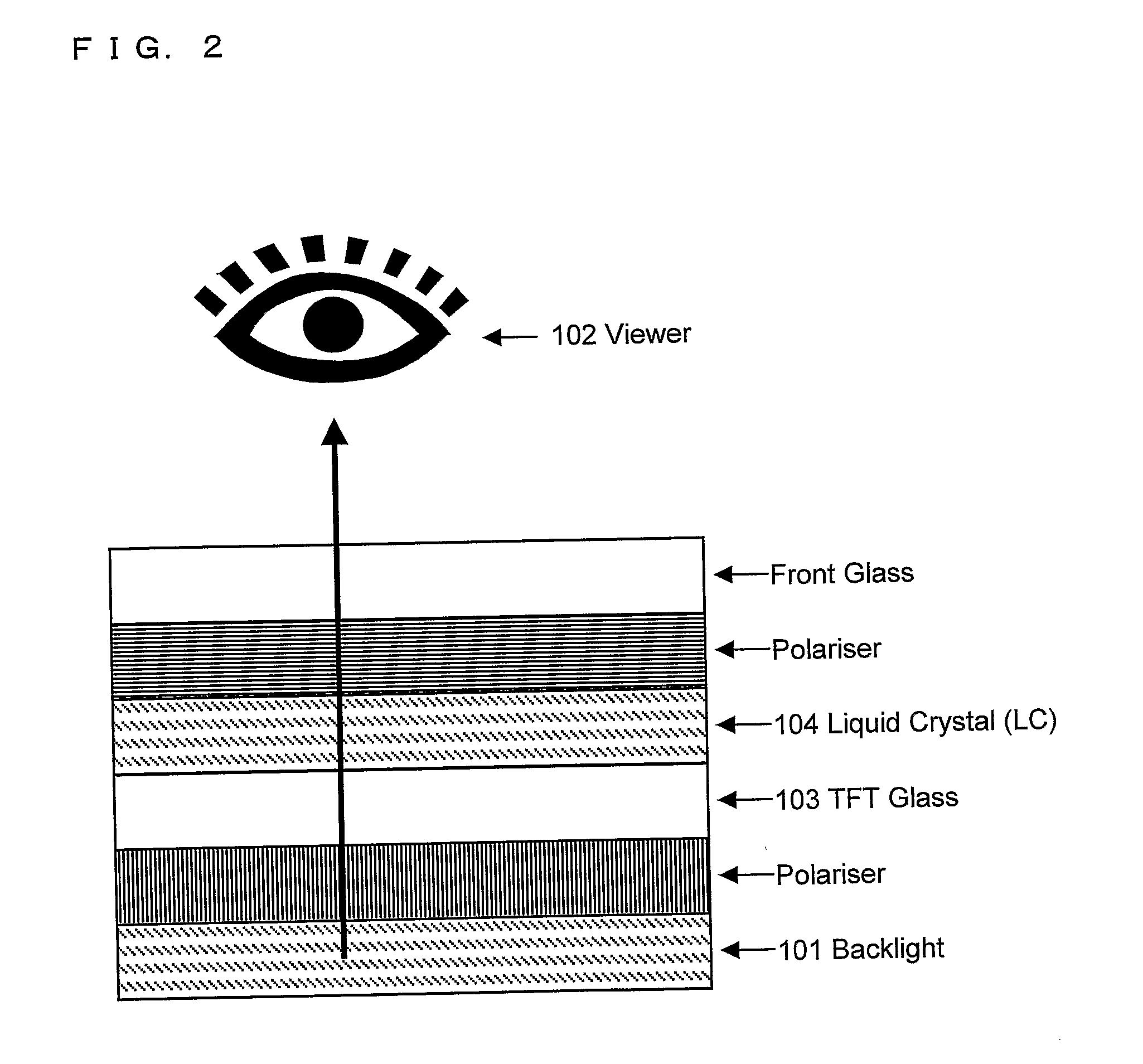Stray light compensation in ambient light sensor
- Summary
- Abstract
- Description
- Claims
- Application Information
AI Technical Summary
Benefits of technology
Problems solved by technology
Method used
Image
Examples
first embodiment
[0220]The first embodiment consists of a light sensor circuit comprising of the following elements:
[0221]A detection photosensor element which is exposed to ambient light
[0222]A reference photosensor element which is shielded from ambient light.
[0223]A measurement circuit which is connected to the detection and reference photosensor elements.
[0224]The detection and reference photodiodes may be designed to be nominally identical and to be both electrically and optically well matched.
[0225]A light blocking layer is used as in FIG. 12 so that the detection photodiode is exposed to both ambient and stray light, and the reference photodiode is just exposed to ambient light.
[0226]The operation of the light sensor circuit is as follows:
[0227](i) The measurement circuit measures the bias that needs to be applied between the terminals of the reference photosensor element such that a current substantially equal to zero flows through the reference photosensor element. The bias that the measure...
second embodiment
[0247]The second embodiment consists of a light sensor comprising the following elements:
[0248]A detection photosensor element which is exposed to ambient light
[0249]A reference photosensor element which is shielded from ambient light.
[0250]A measurement circuit which is connected to the detection and reference photosensor elements.
[0251]A subtraction circuit for storing and subtracting two digital signals
[0252]The operation of the light sensor circuit of this embodiment is as follows:
[0253](i) The measurement circuit measures the bias that needs to be applied between the terminals of the reference photosensor element such that a current substantially equal to zero flows through the reference photosensor element. The bias that the reference sensor circuit needs to apply in order to achieve this is then substantially equal to the open circuit bias of the reference photosensor element VOC(A).
[0254](ii) The measurement circuit measures the current ID that flows between the two terminal...
third embodiment
[0287]the invention consists of a light sensor circuit comprising of the following elements:
[0288]A detection photosensor element which is exposed to ambient light.
[0289]A first reference photosensor element which is shielded from ambient light.
[0290]A second reference photosensor element which is shielded from ambient light.
[0291]A measurement circuit which is connected to the detection and reference photosensor elements.
[0292]The operation of the light sensor circuit of this embodiment is as follows:
[0293](i) The measurement circuit measures the bias that needs to be applied between the two terminals of the first reference photosensor element such that a current substantially equal to zero flows through the first reference photosensor element. The bias that the measurement circuit needs to apply in order to achieve this is then substantially equal to the open circuit bias of the first reference photosensor element VOC(A).
[0294](ii) The measurement circuit then applies the negative...
PUM
 Login to View More
Login to View More Abstract
Description
Claims
Application Information
 Login to View More
Login to View More - R&D
- Intellectual Property
- Life Sciences
- Materials
- Tech Scout
- Unparalleled Data Quality
- Higher Quality Content
- 60% Fewer Hallucinations
Browse by: Latest US Patents, China's latest patents, Technical Efficacy Thesaurus, Application Domain, Technology Topic, Popular Technical Reports.
© 2025 PatSnap. All rights reserved.Legal|Privacy policy|Modern Slavery Act Transparency Statement|Sitemap|About US| Contact US: help@patsnap.com



